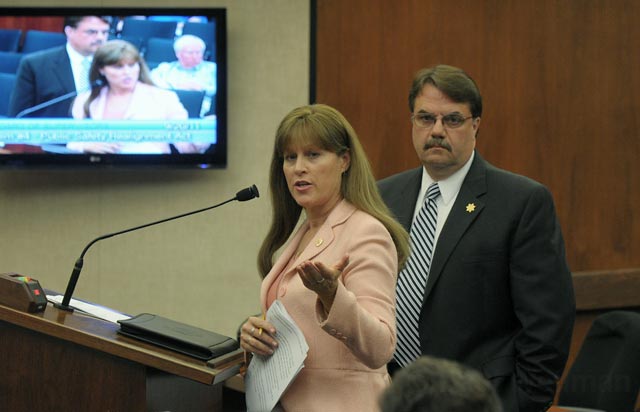S.B. Braces for Inmate Influx
County Forced to Shoulder Hundreds of Convicts Coming from State Prison

The State of California, in an effort to alleviate its own crowded prisons and financial crisis, has shed responsibility for thousands of inmates, putting them in the hands of local jurisdictions to take care of. As a result of Governor Jerry Brown signing Assembly Bill 109 earlier this year, beginning October 1, Santa Barbara County will start to receive hundreds of low-level inmates and parolees from the California Department of Corrections and Rehabilitation, leaving a big question mark as to what effect those people headed back to the area will have on public safety. All incoming inmates committed crimes in Santa Barbara County and contributed one percent to the entire state prison population.
When the plan is fully implemented by sometime next fall, officials anticipate gaining responsibility for an additional 600 to 640 people. They are divided into two populations: non–sex-offenders who are nonviolent, nonserious, not considered high-risk, currently in prison, and likely to be out on parole soon; and future nonviolent, nonserious non–sex-offenders who will serve their felony sentences in County Jail.
The good news is the county, aside from planning for AB 109, has been implementing for years various programs to reduce recidivism. Right now, 70 percent of Santa Barbara parolees reoffend within three years of their release. In an effort to drop that number, the county in July 2010 opened day reporting centers — funded by state money — in Santa Barbara and Santa Maria to help inmates reenter society by offering drug and alcohol counseling, job training, anger management therapy, and placement and development programs. The first group of parolees graduated in July. With resources under AB 109, the convicts, said Chief Probation Officer Patti Stewart, will have two choices: Get help and become productive members of society, or continue a life of crime. Stewart headed a committee, including Sheriff Bill Brown, District Attorney Joyce Dudley, and the Public Defender Raimundo Montes De Oca, among others, to come up with a plan for the county to deal with the impacts of AB 109.
Additionally, rather than parolees being monitored from a distance by state parole officers with high case loads of around 80 to 1, they will be overseen by county probation officers who have caseloads of 50 to 1. Because of these strategies and others, public safety officials say, the realignment holds tremendous positive potential.
But there’s an “if.” That if, as it usually is, is funding. This year, the county will receive $3.9 million for the nine months of the fiscal year remaining, during which law enforcement will deal with approximately 477 offenders.
Funding for the following year and those subsequent is up in the air still, as the state hasn’t guaranteed where money is coming from. County officials are lobbying for a constitutional amendment, which will likely have to be decided by the electorate, to be placed on the ballot next year to ensure local funding for the future.
“We know what to do; we just don’t have sufficient funds to do it,” Sheriff Bill Brown said.
The uncertainty at the state level compounds issues for area public-safety entities, which have taken huge hits over the last several years as the economy tanked. The county has dealt with a grossly overcrowded jail for the better part of 25 years. And despite help from the state, the money has no correlation to the funding needed to provide the required services. The state is essentially providing $8,000 per inmate. The county’s responsibility for parolees will cost roughly $5,000, but the cost of an inmate to the county is closer to $40,000. The state, through AB 109, is forcing the county’s hand, and Sacramento is simply not giving the county the resources necessary to pull off the implementation plan. “We know what to do; we just don’t have sufficient funds to do it,” Sheriff Bill Brown said.
But for the most part, the impacts of the realignment are yet to be seen, like the District Attorney’s ability to plea-bargain cases. The office currently plea-bargains roughly 90 percent of its cases. But a defendant, facing a jail term or electronic monitoring in place of prison time as a consequence for committing a crime, might be less likely to take a deal and more likely to take a case to trial. The result could strain DA resources, public defender resources, and court calendars. “It’s difficult to be optimistic about this,” said District Attorney Joyce Dudley.
Some of the sentencing alternatives to be used in place of detention include the following:
• expansion of enhanced electronic supervision by 100 GPS units
• home detention
• day and weekend reporting
• jail inmates serving prison sentences getting two days’ credit for every day served
Examples of the treatment resources to be implemented are as follows:
• drug treatment and support
• transitional housing and sober-living situations
• assessment and medication management, both in individual and group capacities
• enhanced treatment services in County Jail, the Sheriff’s day reporting center, and the probation reporting center



